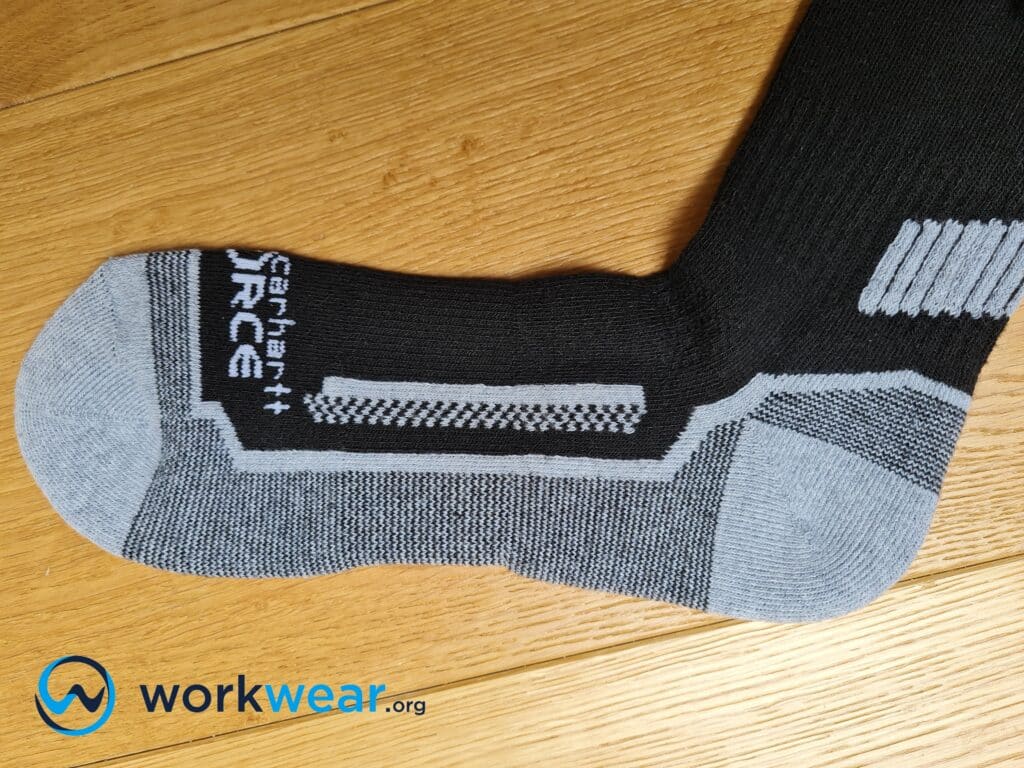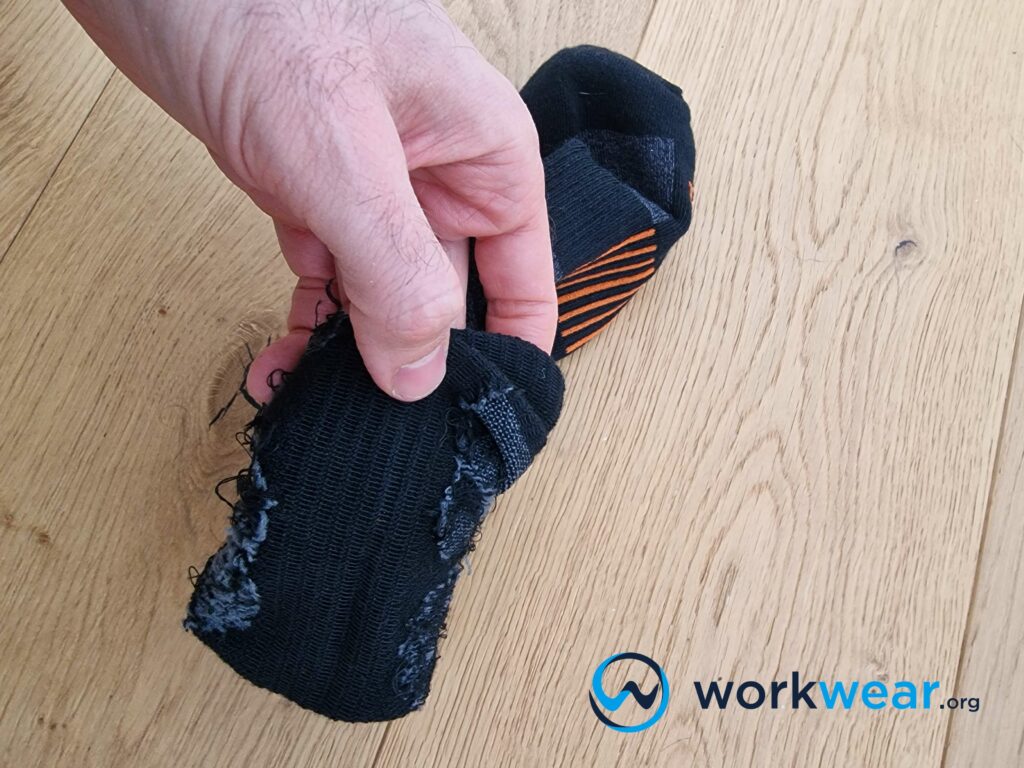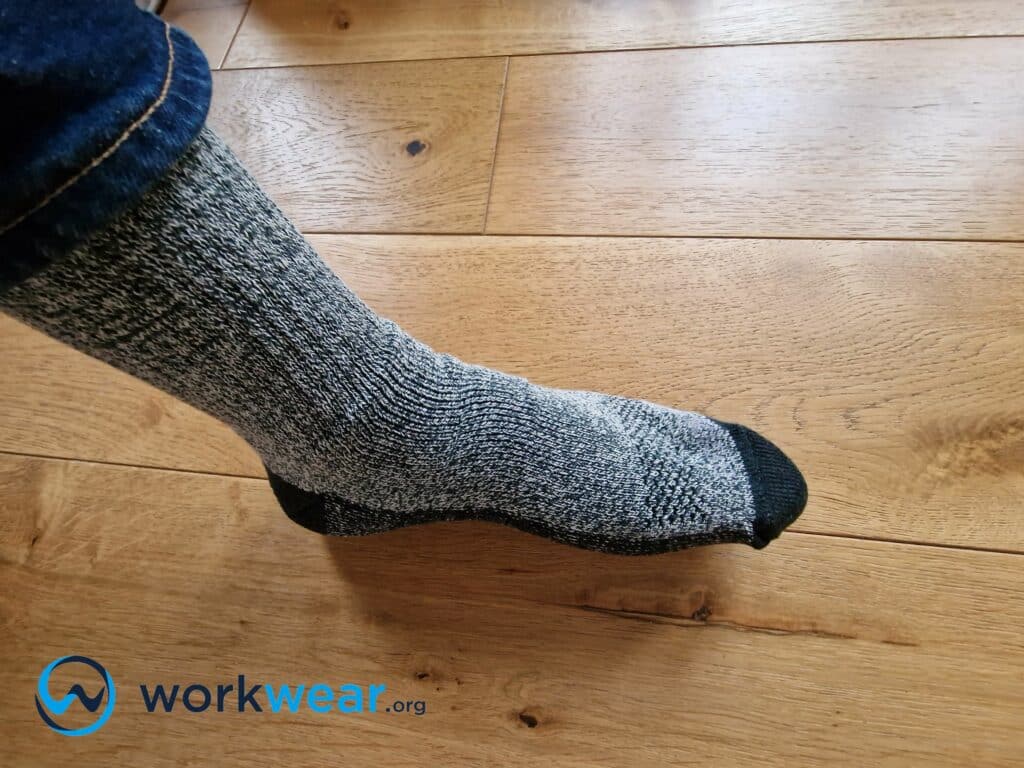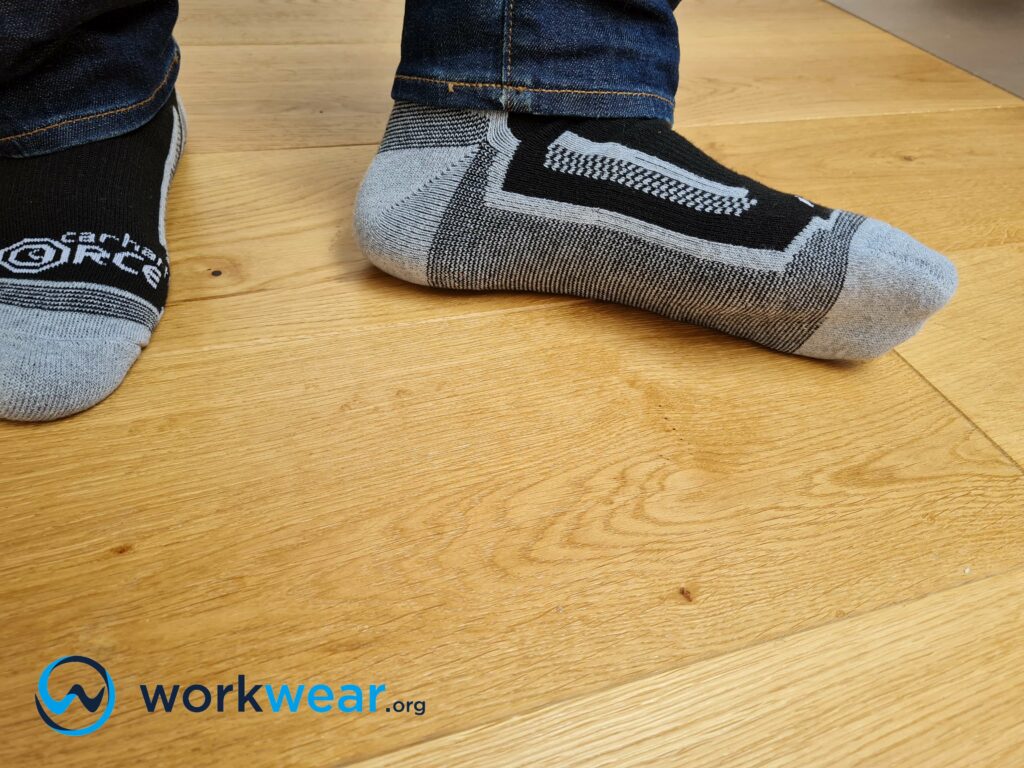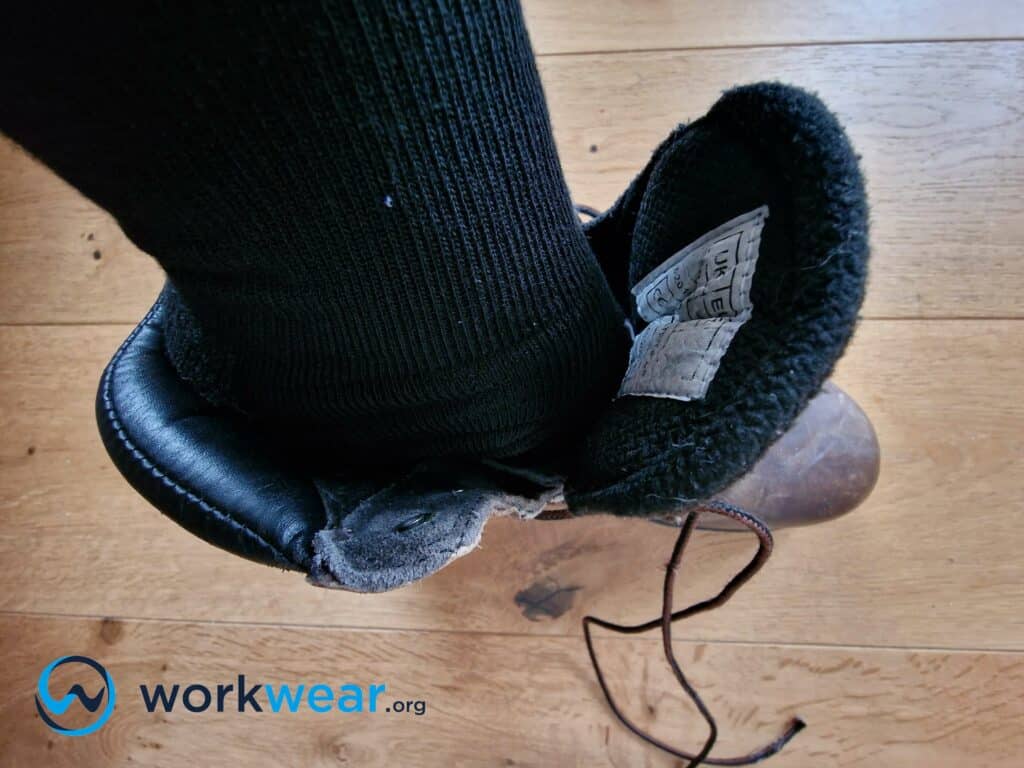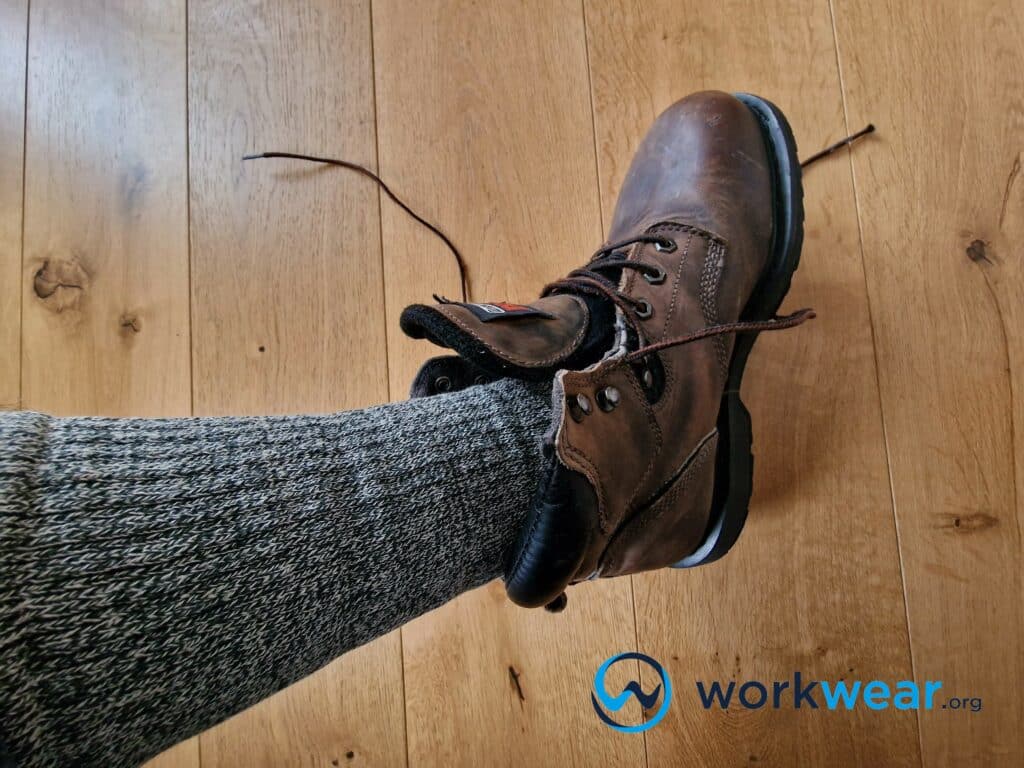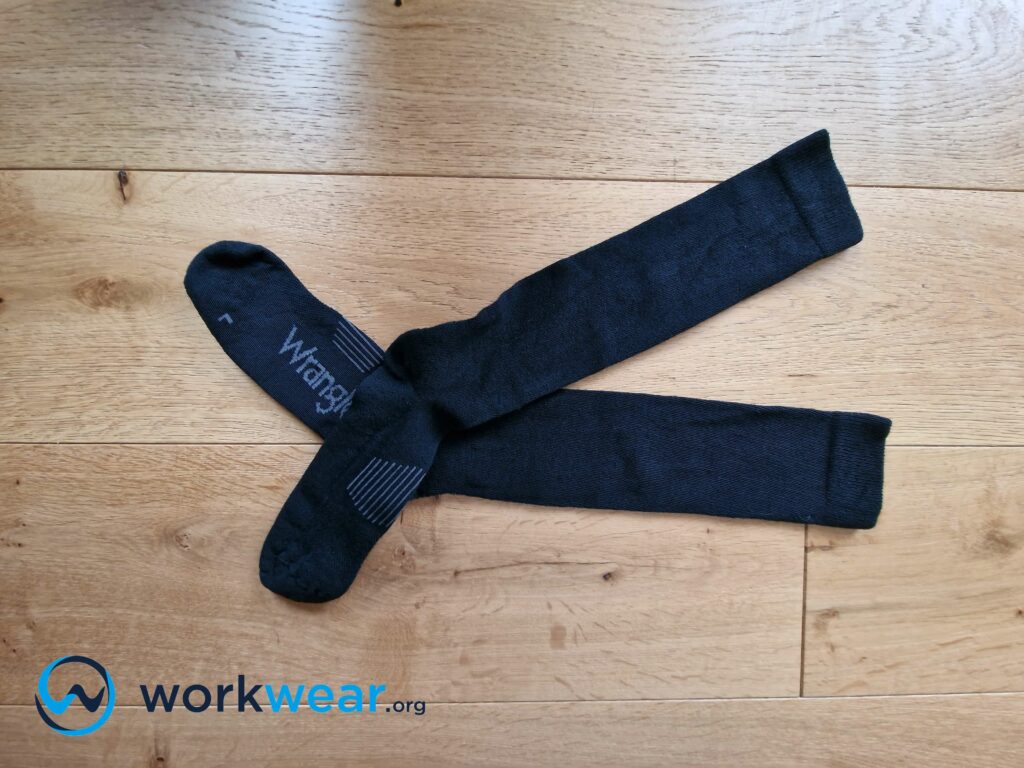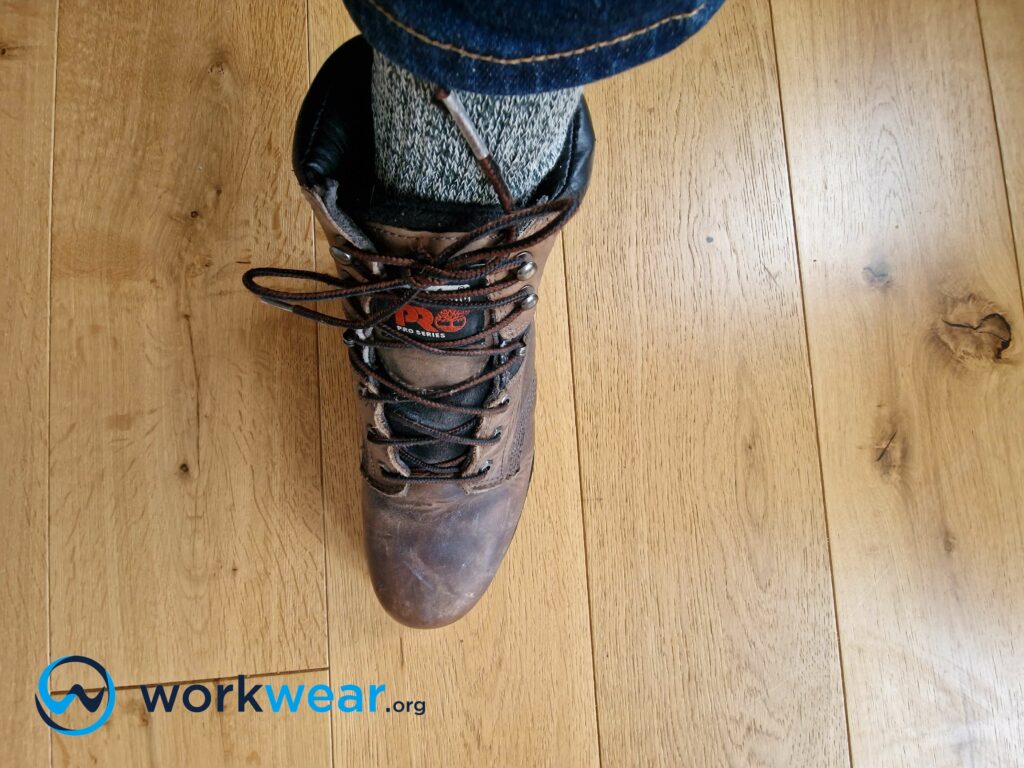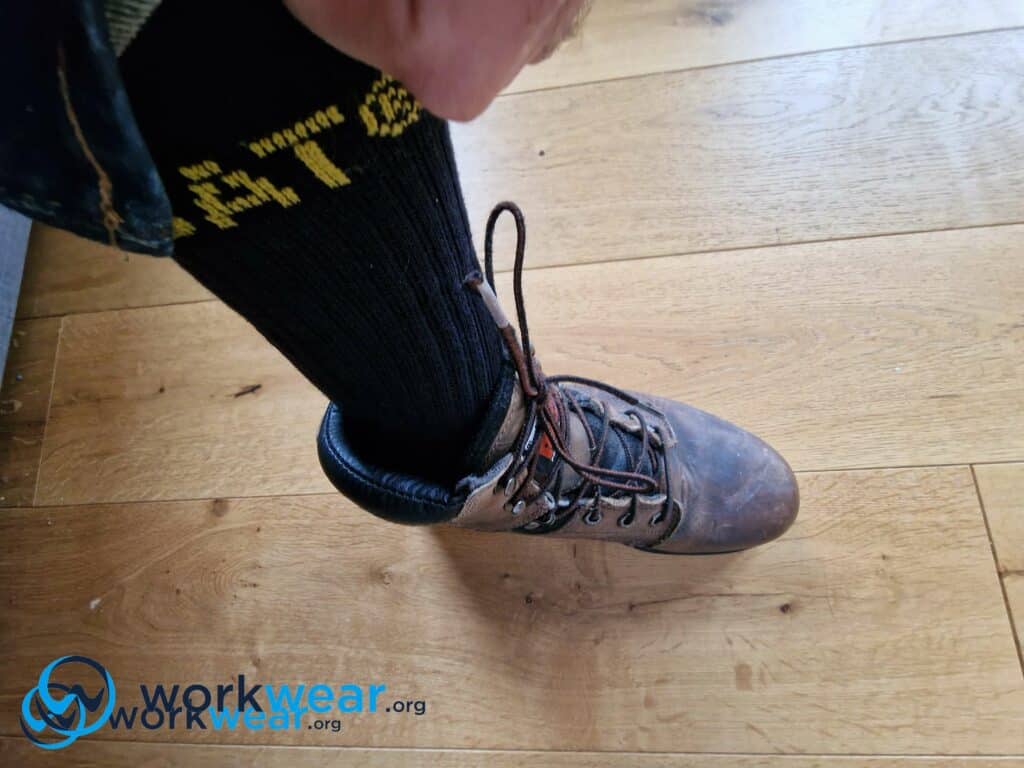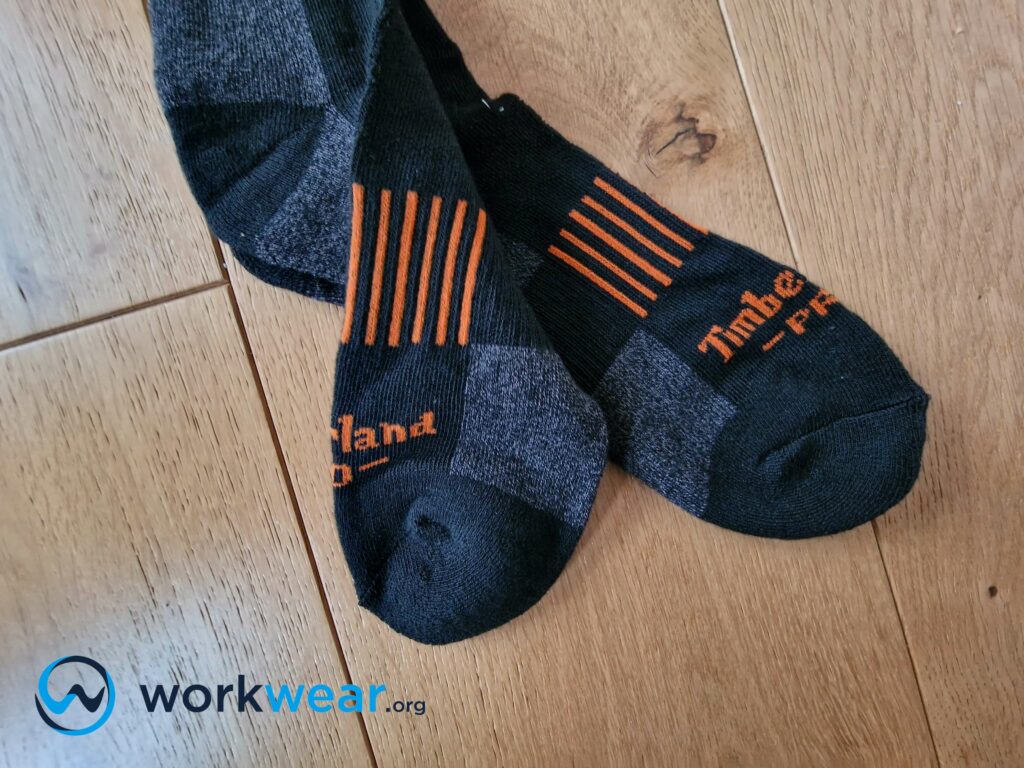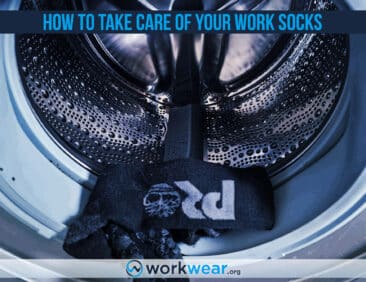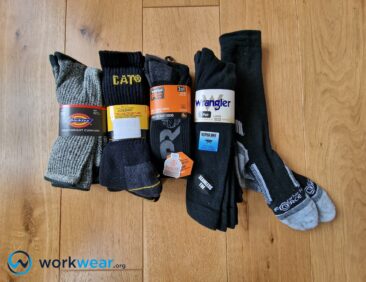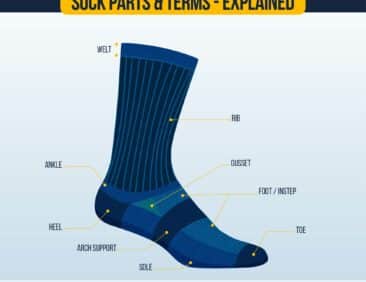Benefits of Wearing High-Quality Work Socks
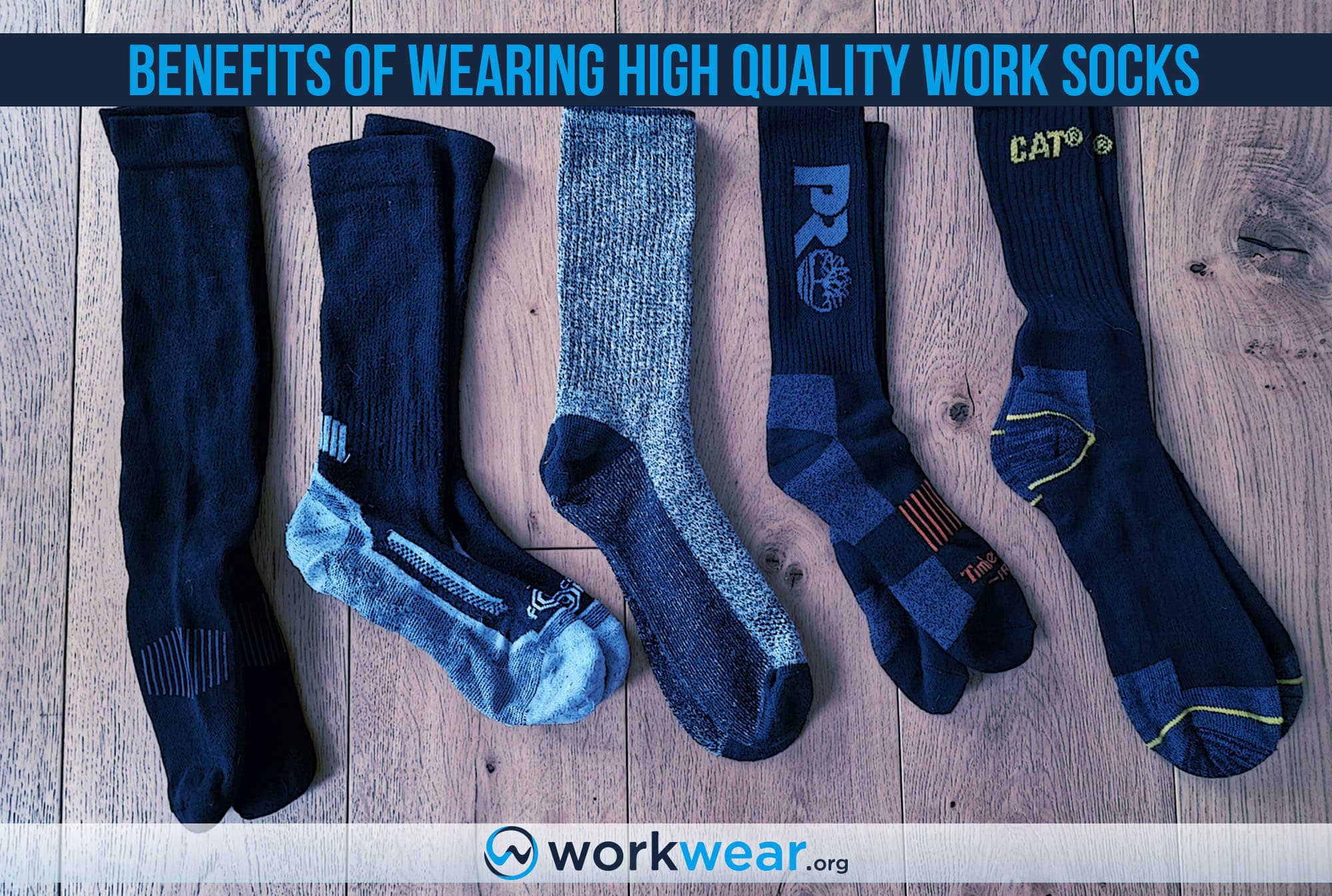
When you work on your feet all day, you’ll need all the help you can get to ensure foot comfort that lasts at least as long as your workday.
High-quality work socks can distinguish between foot pain and a comfortable walking experience in even the most challenging work environments.
The materials and details for building well-made work socks are superior to lower-quality options. The discrepancy can be felt even more with extended walking or staying upright hours.
Investing in high-quality work socks brings many benefits that can be maximized on the work site, and we’ll discuss each advantage in more detail in this article.
What are the Benefits of Wearing High-Quality Work Socks?
Comfortable cushioning
High-quality work socks use premium materials and designs that deliver the right cushioning for maximum comfort.
These work socks perform well in work conditions but are built to envelop the feet with much-needed softness throughout the day. This quality helps the feet stay comfortable even with prolonged walking, standing, and other movements to get the job done.
Impact absorption
Premium work socks offer good shock absorption that other products of lower quality can’t match.
These socks may use thicker fabric to soak up most of the impact of continuous walking on unyielding surfaces (such as concrete floors) so that the feet are saved from absorbing most of the force.
The socks’ ability to absorb shock helps promote comfortable walking for long periods and can stop foot fatigue from fully settling in.
Enhanced foot support and stability
Work socks made with premium quality fabrics and construction are designed to move along with the feet’s motion.
They don’t get in the way of the feet’s natural movements and instead offer support where it’s most needed – such as the arch area.
Stable walking can be enjoyed with confidence as the work socks fluidly flexed along with each step, even going over tricky surfaces. Unlike low-quality socks that tend to slip down with continuous walking, these socks also promote a more stable feeling because they’re designed to stay secure.
Premium appearance
The appearance of work socks reflects the quality of materials and procedures used. It’s quite easy to tell the difference between premium-quality work socks and those of inferior quality with the way they look.
High-quality work socks have sleek designs and smooth fabric, with seams and ribbing details seamlessly incorporated into the rest of the structure.
Their patterns or color accents also look streamlined and completely in tune with the sock design.
Conversely, low-quality work socks may look rough around the edges, with stitching details and patterns that often don’t look symmetrical or properly done.
Lasting durability
Investing in high-quality work socks can deliver comfort and aesthetic benefits and offer long-term performance.
The fabrics used in building the socks are meant to last a long time, so the socks don’t easily fall apart, even with heavy use.
These premium quality work socks can be relied on to maintain their superb appearance for much longer. Meanwhile, lower-quality options can show signs of damage after only a few uses, such as threads or stitching that can quickly unravel.
The fabric or low-quality work socks may also be prone to pilling and tearing before long.
Protection against chafing
Work socks featuring high-quality fabrics protect the feet against chafing.
The premium materials hug the feet with a soft yet resilient structure, forming a protective barrier to save the skin from rubbing painfully against the leather or cloth inner lining fitted into work boots and shoes. This quality is even more helpful when wearing heavy-duty work boots with thick components that tend to rub more aggressively against the skin, causing discomfort without an effective protective barrier material.
Prevent overheating
Superior quality work socks are designed to let a good amount of air get in and circulate.
These socks are built with breathable materials that promote continuous ventilation, allowing the feet to breathe so they don’t easily succumb to overheating.
High-quality, breathable work socks can keep the feet cool during long working hours outdoors under the sun and in other high-temperature or humid environments.
Stops extreme sweating
High-quality work socks that allow plenty of air often allow moisture to escape quickly.
Moisture-wicking materials and sections can be fitted into the socks, enabling them to dissipate sweat before it can build up.
This way, the feet can maintain a comfortable dry feeling even with all-day walking or working on strenuous activities in hot work sites. Keeping the feet dry also helps stop the feet from sliding unintentionally inside the boots, which can cause unstable walking.
Maintain comfortable warmth in cold settings
Work socks that showcase superior quality often have temperature-regulating features to ensure lasting foot comfort in variable work environments.
The materials or special enhancements can offer much-needed insulation to preserve warmth, protecting the feet against a painfully chilled feeling while finishing tasks in cold job sites.
Odor prevention
Excellent quality work socks stop moisture from building up, greatly minimizing the risk of bacterial growth that can lead to bad odor.
These socks’ moisture dissipation and breathable qualities maintain the fresh feeling and smell inside the work boots and shoes, making it easier to prevent smelly feet problems.
| Materials Commonly Used for High-Quality Work Socks |
Key Features |
|---|---|
| Cotton |
|
| Wool |
|
| Bamboo |
|
| Polyester blend |
|
Conclusion
The quality of the work socks you use will significantly impact how your feet feel and function while on the job. Work socks using high-quality materials often display superior aesthetics. They are significantly more resistant to damage than inferior-quality options, so you can maximize your investment for much longer. They’re also much more comfortable to use over long periods of walking or standing, often with premium materials and enhancements for cushioning, support, temperature regulation, and odor and moisture control. Wearing high-quality work socks will make it easier for the feet to move in work environments without sacrificing efficiency.
FAQs
- Are high-quality work socks suitable for casual use?
- Yes, high-quality work socks can also be used for non-work purposes and environments where superior features can be enjoyed.
- Do all high-quality work socks use thick materials?
- No, some superior quality work socks are made with thinner materials but perform just as well in work settings. The less-thick socks offer advantages for specific job conditions, including breathability and minimized bulk for comfort.
- Do high-quality work socks feel better than cheap options?
- Work socks built with premium materials and methods generally feel more comfortable compared to lower-quality pairs. This is because the materials are often softer and smoother, with adequate elasticity and durability to keep up with different job settings.
- Can cheap work socks harm the feet?
- Cheap work socks use lower-quality materials, which can cause skin irritation, especially for those with sensitive skin. Stitching details may only sometimes be properly done, causing pressure and friction on certain parts of the feet, which can lead to blisters and bunions.
678+
Products Reviewed
24+ Years
Combined Experience
500+ Hrs
Field Testing
